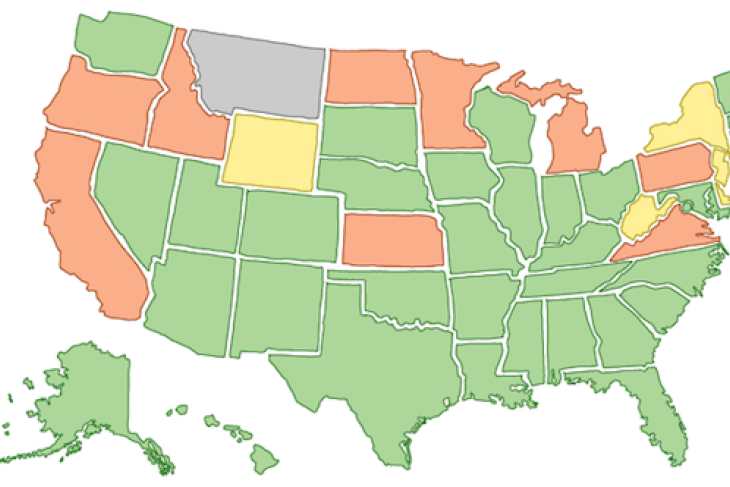The Every Student Succeeds Act grants states more authority over their accountability systems than did No Child Left Behind, but have they seized the opportunity to develop school ratings that are clearer and fairer than those in the past? Our new report, Rating the Ratings: Analyzing the 51 ESSA Accountability Plans, examines the plans submitted by all fifty states and the District of Columbia, and whether they are strong or weak (or in-between) in achieving three objectives:
- Assigning annual ratings to schools that are clear and intuitive for parents, educators, and the public;
- Encouraging schools to focus on all students, not just their low performers; and
- Fairly measuring and judging all schools, including those with high rates of poverty.
Key findings include:
- Thirty-five states—69 percent—received a "strong" grade for using clear and intuitive ratings such as A–F grades, five-star ratings, or user-friendly numerical system. These labels immediately convey to all observers how well a given school is performing, and is a major improvement over the often Orwellian school ratings of the NCLB era.
- The country is also doing much better in signaling that every child is important, not just the "bubble kids" near the proficiency cut-off. Twenty-three states earned strong grades on this objective, and another fourteen earned medium marks.
- There is somewhat less progress when it comes to making accountability systems fair to high-poverty schools. Only eighteen states are strong here. But twenty-four others earn a medium grade, which is still an improvement over NCLB.
Altogether, twenty-one of the fifty-one proposed school rating systems are either good or great—earning at least two strong grades and one medium. And those of eight states—Arizona, Arkansas, Colorado, Georgia, Illinois, New Hampshire, Oklahoma, and Washington—are the best, having received perfect scores. Moreover, of all the ratings we assigned across the three objectives, 50 percent were strong and 29 percent were medium.
On the flip side, three states received weak grades in each of the three areas: California, Idaho, and North Dakota. They rely on proficiency rates, don’t emphasize student growth, and propose using a dashboard-like approach with myriad data points and no bottom line for reporting school quality to parents, beyond identifying their very worst schools, as required by federal law.
Although many states included elements in their school rating systems that we don’t love, it’s welcome news that so many have corrected NCLB’s biggest flaws. Moreover, none of these ESSA plans are set in stone, and we hope that states will return to the drawing board to make their systems better before too much time passes. Congress probably won’t get around to reauthorizing the law for a decade or more. States need not—and should not—wait that long to make improvements.
But that is a conversation for another day. For now, let’s celebrate the fact that states, by and large, seized the ESSA opportunity to make their school accountability systems clearer and fairer. In this era of political dysfunction, that’s no small thing.


